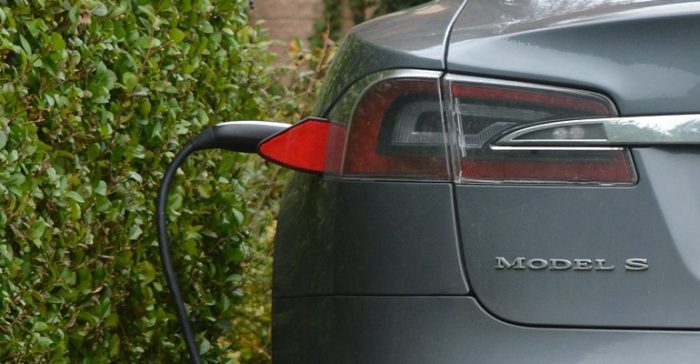Ryan Pollin, ERS, for Zondits
April 4, 2016. Image credit: Ben_Kerckx
The deployment of electric vehicles (EVs) has begun, albeit slowly. EV sales are barely past the 1% of market share milestone, and 40% of those vehicles have been sold in California – progress elsewhere is even slower. But there is reason to be positive, because across the country and the world, manufacturers, nonprofits, and governments alike are finding innovative ways to get more EVs on the road.
Direct Sales
Tesla’s financial innovations on the car dealership made waves as well. For the entirety of Tesla’s sales history they have used a direct-sales model, essentially owning all the car dealership-like outlets that sell the cars. This vertical integration strategy cuts out a whole layer of profits from the middle of the car-sales pipeline, and ensures that the vehicles are sold at the price-point directed by the manufacturer. This tactic was quick to be politicized, however, and as of today the direct-sales model has been legally challenged in 26 states, 6 of which uphold a sales ban today. These typically take shape as an appeal to “unfair competition” for conventional dealerships. This is a very creative strategy adopted by manufacturers, but it seems the fossil fuel interests hold the keys to the ignition in half the country, making this kind of strategy unlikely to expand any further. Fortunately, there is a simpler path forward:
Read more about Tesla’s direct sales legal strategy.
Bulk Buys
Drive Electric Minnesota is a coalition of non-profits, and they organized deep discounts to anyone in Minnesota who wanted to buy a Nissan Leaf this March. After the federal tax incentives are included, Minnesotans could get the vehicle at 38.9% off sticker price. How did they do it? The coalition is organizing bulk-buying groups in concert with a dealership to leverage these discounted rates from the manufacturer. And they’re not the only one; the similarly named Drive Electric Northern Colorado has a discount package that adds up to 65% of retail price. Fort Collins residents can own a brand-new electric vehicle for a lowly $11,000, completely flipping the tables on what is usually a premium-priced vehicle. The groups are among the first to roll out this bulk-buy tactic to jump-start deployment of EVs across the country, but they won’t be the last.

The strategy of bulk-buying targets the very heart of why EVs have been slow to take off – incrementally higher costs to their gasoline-powered competitors – and it does so without complicated politics. Using existing dealerships, pro-EV groups, and existing financial incentives, the Drive Electric groups have made quite the attractive package for potential customers. I found out for myself how surprisingly easy it was to acquire a coupon voucher. Just a few hours after I made my request, they emailed me a file with the purchase price information. The Minnesota group’s deal also includes a 2-year deal for discounts in the public vehicle-charging network. Read more about the successes of the bulk-buy programs.
Pay As You Go
India’s Minister of Power Piyush Goyal recently announced the goal of making India a 100% EV nation by 2030. That is quite a target for a country with some 22.5 million cars (to get your bearings straight, the US has around 260 million cars). How could India make this happen in 14 years? The short answer is they aren’t sure yet. Goyal described a self-financing scheme that wouldn’t require any government-supported investments. He envisions a zero down-payment plan where drivers pay for the vehicles using the savings from fueling up the car. The basic idea sounds like a Green Revolving Fund, except that the financial players haven’t been assigned yet. Who owns the asset up front – is it the manufacturer’s car until the lease is paid off, or is it the government’s? Or would it belong to a (likely international) third-party financier? Using the car described below as an example, buying the entire fleet of cars all at once would cost as much as $170B USD.
India has a few things going for it, though. First, the country has had success with this type of scheme in the past. Goyal cites the government’s current program to deploy LED lighting, which has deployed 83 million LEDs to family with a similar payment plan. The Domestic Efficient Lighting Programme effectively brought down the purchase price of an LED almost five-fold, to about $1 USD each.
Let’s also mention that their homegrown EVs in India come in quite a bit cheaper than those found in the United States. The Bangalore-based Mahindra Reva’s current model costs the equivalent of $7,500 USD after some federal incentives are included. It’s not bare-bones either: you can use your smartphone to unlock the doors or turn up the air conditioning. But are they ready to scale up production from 30,000 units annually to millions?
Read more about India’s EV aspirations.
I’m not ready to say that India will make its goal, but I will certainly enjoy cheering them on as they try. In the meantime, the US is breaking past the direct-sales deadlock surrounding Tesla with this newer bulk-buy strategy to get EVs out quickly and cheaply. Tesla’s future in the remaining 6 states seems uncertain, but the bulk-buy strategy, I am sure, will only grow.
